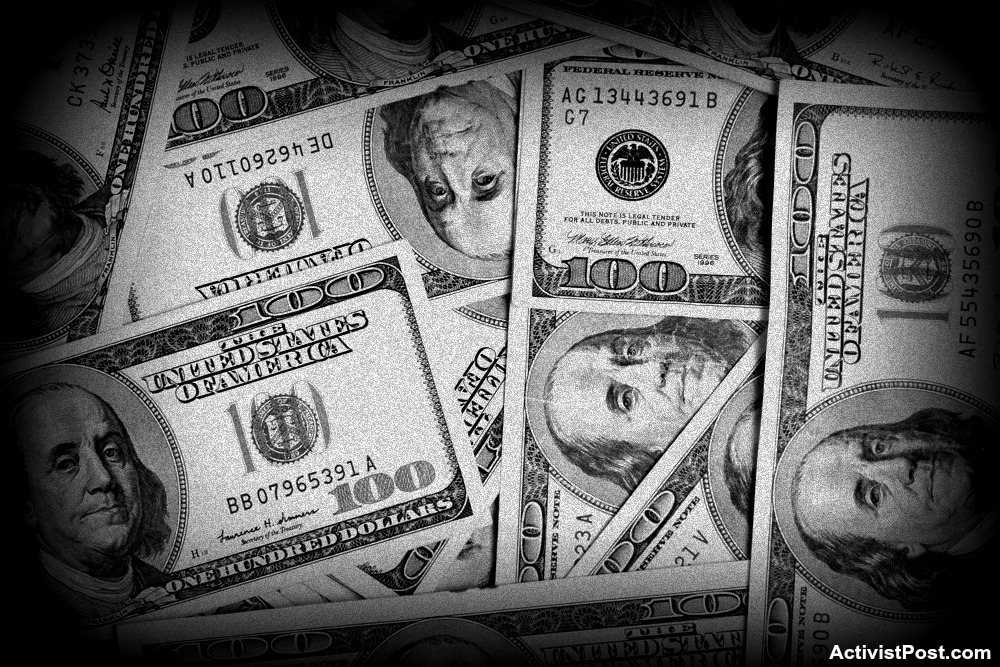 By Mike Gleason
By Mike Gleason
As trading kicks off for the month of October, many investors are looking for a place to hide.
The U.S. stock market got slammed on Thursday to finish out the month and the quarter on a down note. The S&P 500 fell 5% overall in September.
Bonds also fared poorly last month as yields rose.
As for precious metals markets, they too lost ground. However, gold and silver prices did manage to rally yesterday and today. Although it’s too early to read much into the move, bulls can take some encouragement from the fact that metals markets diverged positively from the stock market. Perhaps something of a fear trade is beginning to materialize heading into the fourth quarter.
With all the debt drama in Washington, all the imbalances in the economy, and all the market distortions created by the Federal Reserve’s inflationary monetary policies, investors face considerable risks in conventional financial assets.
There is no value to be found in the bond market with yields still well below inflation. And stocks may have much further to fall before they become bargains on a valuation basis.
Gold and silver are looking attractive to value-seeking bargain hunters.
Metals markets aren’t currently reflecting the price inflation that is hitting other sectors of the economy. But that can change as quickly as shifts in investor sentiment. Optimism toward the economic recovery and the stock market has put a damper on gold and silver as an investment theme.
But inflation is starting to hurt a lot of companies – not to mention individual consumers, savers, and retirees.
In testimony before the Senate banking committee this week, Federal Reserve Chairman Jerome Powell acknowledged that inflation isn’t turning out to be as transitory as he had expected. He said that “Inflation is elevated and will likely remain so in coming months before moderating.”
Even if it moderates at some point in the future, it won’t reverse. The damage has already been done. Higher prices are here to stay.
One sign of the times is that dollar side menus at fast food restaurants have been trimmed, eliminated, or converted into two-dollar and three-dollar menus.
Meanwhile, dollar stores are facing an identity crisis as their brand becomes economically unviable. Dollar Tree operates under the trademarked Slogan “Everything’s $1.” But it is now introducing products priced above a dollar, as Brian Sozziof of Yahoo Finance reported.
Brian Sozziof: There’s a social media uproar over Dollar Tree. They came out this week saying they’re going to start selling more products over a dollar. They’ve already been testing this at hundreds of stores, most notably in early August, just as a way to offset inflation, ultimately appease an active investor that showed up on their doorsteps last year here. They cannot continue to sell a whole store full of stuff for a dollar when you have inflation in transportation and workers going through the roof. Realistically over time, Julie, it will probably be a 10 Dollar Tree store.
Any business that pegs its pricing structure to a set quantity of U.S. dollars is operating on an unsustainable model. Just like the old five and dime stores have gone by the wayside, so too will the availability of products priced at just one dollar.
At the root of the inflation problem afflicting businesses and individuals is the excess creation of fiat dollars by the central bank. The Fed is digitally printing currency units by the trillions in large part to prop up the U.S. Treasury market and enable Congress to run multi-trillion-dollar deficits.
Over the past 18 months, the Fed has purchased 57% of all new Treasury issuance.
Fed policymakers are taking the U.S. down a dangerous road toward total debt monetization. The biggest risk of such a policy is an untamable rise in inflation as Uncle Sam’s need for cash grows faster than the economy’s ability to generate it.
And the biggest risk for investors is holding too much of their wealth in dollar-denominated financial assets.
A supposedly well-diversified portfolio of stocks and bonds can perform terribly during periods of stagflation. And stagflationary periods such as we experienced in the late 1970s can drag on for years.
In such an environment, hard assets are the place to be. And the best time to buy them is when they are on sale.
Mike Gleason is a Director with Money Metals Exchange, a national precious metals dealer with over 50,000 customers. Gleason is a hard money advocate and a strong proponent of personal liberty, limited government and the Austrian School of Economics. A graduate of the University of Florida, Gleason has extensive experience in management, sales and logistics as well as precious metals investing. He also puts his longtime broadcasting background to good use, hosting a weekly precious metals podcast since 2011, a program listened to by tens of thousands each week.
Become a Patron!
Or support us at SubscribeStar
Donate cryptocurrency HERE
Subscribe to Activist Post for truth, peace, and freedom news. Follow us on Telegram, HIVE, Flote, Minds, MeWe, Twitter, Gab, Ruqqus, and What Really Happened.
Provide, Protect and Profit from what’s coming! Get a free issue of Counter Markets today.

Be the first to comment on "Dollar Stores Face Branding Disaster as Unsustainable Model Is Revealed"